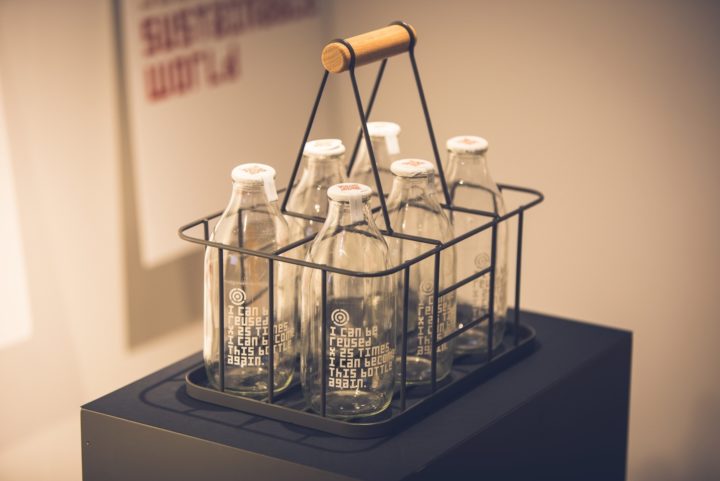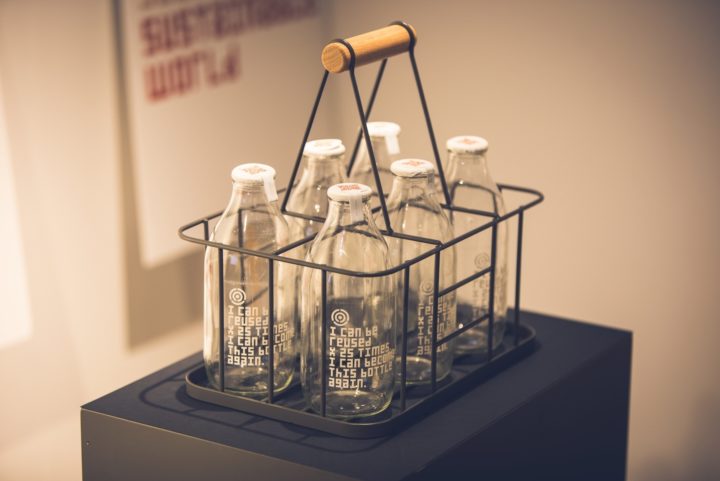Sustainable Stories: The Milkman had it right

Let’s take milk. Modern packaging mainly uses plastic (HDPE) or Tetra Pak container. Around 5.5 billion litres is sold annually in UK alone. It’s mainly delivered via petrol-fuelled lorry from miles away. HDPE, even if re-processed, cannot be re-used as a container due to loss of material integrity. It’s what we call a ‘mixed loop material’. Tetra Paks consist of paperboard, polyethylene lamination and aluminium, and at the end of life require specialist recycling techniques that are able to separate all of the materials. This means that it can be challenging for waste management services to ensure all Tetra Paks end up in its designated destination.
Today, only 3% of milk is delivered to the doorstep. 50 years ago, nearly all of it was delivered by a milkman in an electric cart. In 1967, Britain had more battery-electric vehicles on its roads than the rest of the world put together. Purchased from local farmers, milk was sold in reusable glass bottles. Produced directly from local materials, glass is fully recyclable with one bottle being able to power a 100-watt light bulb for one hour. It is what we call a true ‘circular material’ as it can be infinitely turned back into the same thing without loss of any properties. Further to this, 50-80% of bottles are recycled globally, 50% in the UK and 90% in Switzerland. For these whom are conscious of carbon footprint, WRAP concluded that a bottle needs to be reused at least 20 times for glass to be the better environmental option from a carbon perspective.
Back in 1967, a closed loop / circular economy already existed. After the milk was consumed, the glass bottles were left on the doorstep to be collected, washed, sterilised and reused at least 25 times before recycling. As long as they did not break, they could be reused even 100 or 200 times.
With this in mind, one can conclude that the milkman had it right all along. The silver-lining for our team was an inspiration that great material management innovation may not necessarily always lie in the future. The past is where we learned the lesson and future is where we should apply it.
If you are interested in creating sustainable stories, learning about circular economy, circular materials or are working on sustainability-lead project, do not hesitate to get in touch and let’s chat materials some more!

Posted 28 October, 2019 by Katie Kubrak